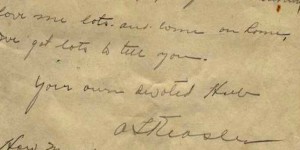Note: When I embraced myself as a storyteller twenty-five years ago my subversive goal was to tell our family stories and have my children come to hear them. You see, when I began collecting our family history our kids waved me off when I spoke begat, begat, begat and then they died. “Boring, Mom.” and – they were right. But once I began to find and add stories and to work something in about today and the members of the family – well it all changed. Now my family not only listens to my stories – some times they pass the stories along.
Today I wrote this essay and posted it on Bethesda-Chevy Chase Patch.com and Ellouisestory.blogspot.com and here. Why? It is important to me. I feel like this message is my storyteller mission statement.
At last, The Atlantic Magazine has published an article I have been waiting for – for years.
THE IMPORTANCE OF TELLING FAMILY STORIES. Now maybe people will get it.
Thirty years ago when I began hunting up my family history genealogy I learned that there was no passing down just the begats – you have to have the stories or the flesh will not go back on the bones. And often times, the stories you want are already buried and you can’t get to them. The sad truth is that one death can close a family library of stories.
I realized I had to switch my tactics and create stories to go with the names and dates I had collected or they would rot in a box. I was desperate to tell the stories so I became a storyteller.
Now, you don’t have to go that far unless you have a yearning for standing in front of the room. But it is important to tell your family about you and your life and how you got to be who you are. Because who you are is part of who the younger ones in your family are and will be.
When I hit rough spots I am glad I have pieced together the stories of the women in my family because they are all survivors. They survived heartache, financial troubles, loss of children and husbands – young and old. One husband was shot in a senseless robbery and his wife went on to raise six children in a time where there were no pensions or workman’s comp – just hard work. I knew this valiant woman, my great aunt, who always stood tall and never lost her faith as she faced into the wind.
And then there are the stories shared around the table, mixed with laughter and love and memories of those who have gone. As well as telling of how things were 10, 20. 30 or more years ago so that our children today will understand us better when we wonder about technologies and lament the demise of the fountain pen or the silence of touch screens as we miss the clatter of typewriters which proved you were working.
Holidays are here. Families are gathering. This is a great time to tell some stories about you and your family. Our family is the most precious audience we have.
Wishing you a very blessed and storied holiday season.



